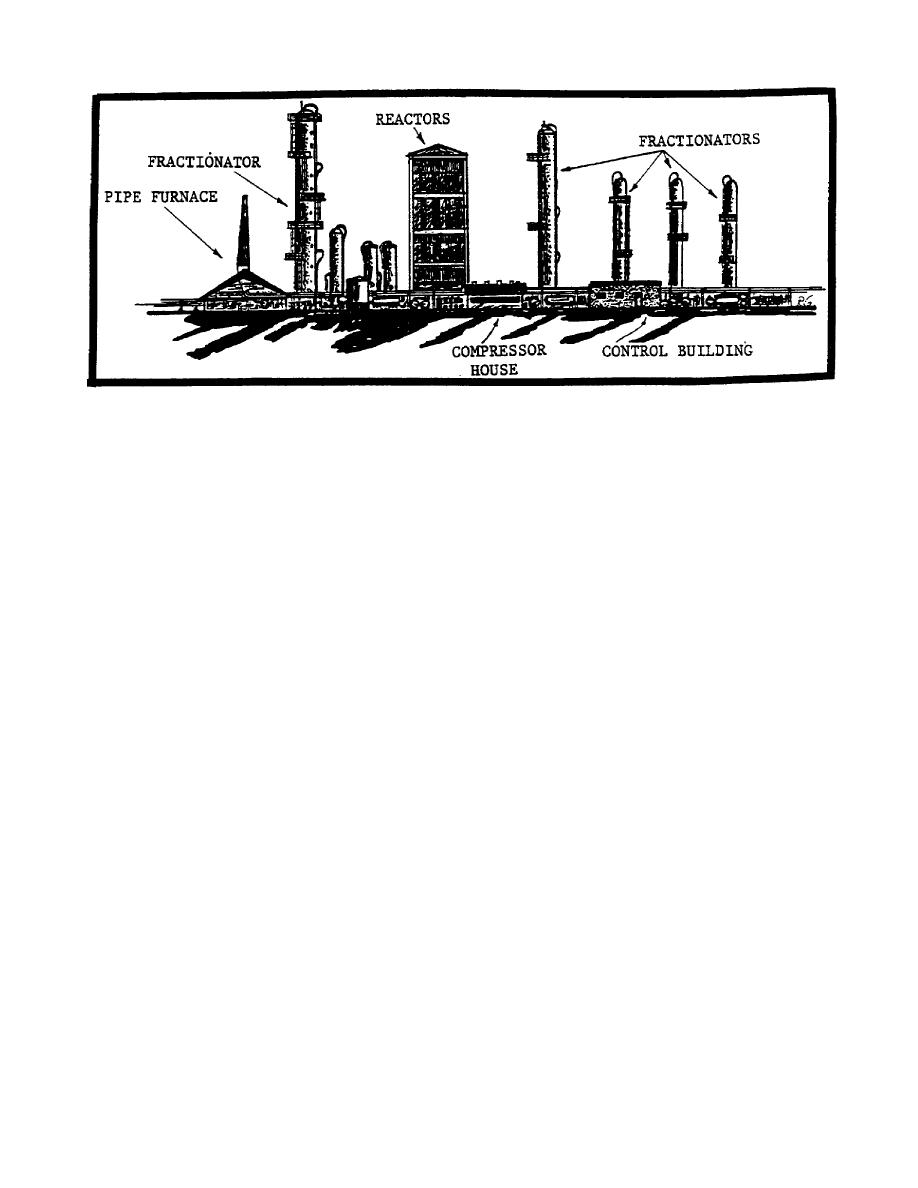
Figure 2-36. Polymerization Unit.
(6)
Cracking.
The primary distillation process separates but does not
alter the hydrocarbon constituents of crude oil.
Heavy gas-oil is one of the
products of primary distillation and delayed coking (Figure 2-29).
The amount of
gasoline extracted from a given amount of crude oil can be increased by taking the
heavy, complex gas-oil hydrocarbons and breaking them down (cracking) into lighter,
simpler compounds.
Cracking gas-oil creates unstable gasoline, light gases, and
fuel oil by applying heat and pressure or catalytic action.
The four common
cracking units found in most refineries are thermal, fixed bed catalytic, thermofor
catalytic, and fluid catalytic.
(a)
Thermal cracking units. Using the oldest method, gas-oil is heated in
a pipe furnace and then routed to a reactor (called a soaker) where it is subjected
to pressure for several seconds.
The combination of heat and extreme pressure
splits the complex gas-oil molecules into smaller, simpler ones. The cracked gas-
oil is then piped into a low pressure fractionator (called a flash chamber) where
the lightest hydrocarbons flash into vapor and the heavier fuel oil condenses. The
remaining vapors are pumped into another distilling tower where gasoline and light
gases are separated, and more fuel oil condenses at the bottom.
The fuel oil is
routed to a treating unit while the unstable gasoline and light gases are piped to
a vapor recovery unit: the gases are separated and the gasoline is stabilized
(Figure 2-29). Major recognition features of thermal cracking units (Figure 2-37)
include:
49 IT 0673



 Previous Page
Previous Page
